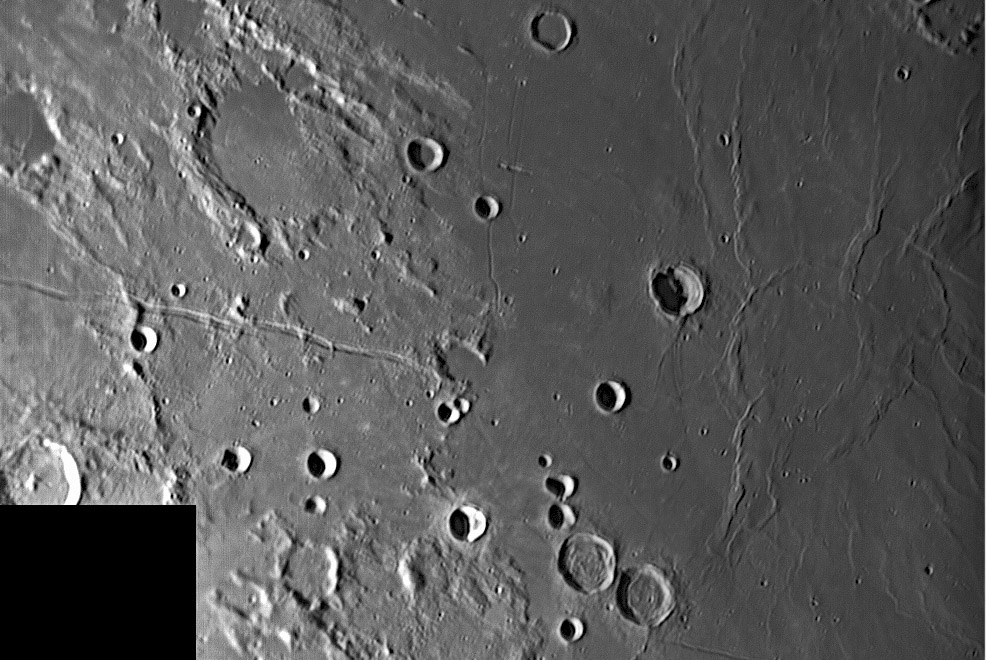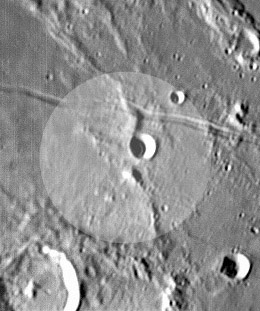Difference between revisions of "September 9, 2021"
(Created page with "__NOTOC__ =Lunar Bird's Nest?= Originally published November 13, 2011 <!-- Start of content --> <!-- ws:start:WikiTextHeadingRule:0:<h1> --> <!-- ws:start:WikiTextL...") |
|||
| Line 1: | Line 1: | ||
__NOTOC__ | __NOTOC__ | ||
| − | = | + | =Ancient History= |
| − | Originally published November | + | Originally published November 10, 2011 |
<!-- Start of content --> | <!-- Start of content --> | ||
<!-- ws:start:WikiTextHeadingRule:0:<h1> --> | <!-- ws:start:WikiTextHeadingRule:0:<h1> --> | ||
| − | <!-- ws:start:WikiTextLocalImageRule: | + | <!-- ws:start:WikiTextLocalImageRule:14:<img src="/file/view/LPOD-Nov10-11.jpg/273806626/LPOD-Nov10-11.jpg" alt="" title="" /> -->[[File:LPOD-Nov10-11.jpg|LPOD-Nov10-11.jpg]]<!-- ws:end:WikiTextLocalImageRule:14 --><br /> |
| − | <em>image by [mailto: | + | <em>image by [mailto:luisalamedaverdu@gmail.com Luis Alameda],</em> Alicante (Spain)<br /> |
<br /> | <br /> | ||
| − | + | This is a wonderful image that clearly defines the intriguing patterns of ridges, domes and rilles in Mare Tranquillitatis. But my attention immediately jumped westward to a vague hint of something that is very common on the Moon but often overlooked. The Moon grew by the accretion of millions or perhaps billions of rocks that collided together, mostly sticking and slowly growing to a large sphere. So the Moon's surface was always just a concentration of impact craters, one on top of another, big ones erasing small, and small ones grinding down the rims of big ones. Most of the craters ever made on the Moon are no longer visible, and ancient ones that just barely remain are probably everywhere. I noticed one of these possible relict craters between Julius Caesar and Agrippa at upper left. After you look and can't find it check the small image below. The strongest part of a possible rim is just north of Agrippa and the curvature is subtle but continues to the east. The west side of the possible rim is missing so the feature's diameter (and existence) can't be determined precisely, but it is about the same diameter as Julius Caesar. This may not be a crater, but it could be.<br /> | |
<br /> | <br /> | ||
| − | <em>[mailto: | + | <table class="wiki_table"> |
| + | <tr> | ||
| + | <td><!-- ws:start:WikiTextLocalImageRule:15:<img src="/file/view/LPOD-Nov10b-11.jpg/273806758/LPOD-Nov10b-11.jpg" alt="" title="" /> -->[[File:LPOD-Nov10b-11.jpg|LPOD-Nov10b-11.jpg]]<!-- ws:end:WikiTextLocalImageRule:15 --><br /> | ||
| + | </td> | ||
| + | <td><em>[mailto:tychocrater@yahoo.com Chuck Wood]</em><br /> | ||
<br /> | <br /> | ||
<strong>Technical Details</strong><br /> | <strong>Technical Details</strong><br /> | ||
| − | + | 19-08-2011. Celestron Nexstar 8i + barlow x2 Takahashi + QHY5- Mono camera.<br /> | |
<br /> | <br /> | ||
<strong>Related Links</strong><br /> | <strong>Related Links</strong><br /> | ||
| − | + | Rükl plate [https://the-moon.us/wiki/R%C3%BCkl_34 34]<br /> | |
| + | Luis' [http://gasendi.blogspot.com/2010/03/lunar-100.html L100 webpage]<br /> | ||
<br /> | <br /> | ||
| − | |||
| − | |||
<hr /> | <hr /> | ||
| + | <br /> | ||
| + | <!-- Removed reference to store page 2 --> | ||
| + | <p><b>Yesterday's LPOD:</b> [[September 8, 2021|Ari & Hero]] </p> | ||
| + | <p><b>Tomorrow's LPOD:</b> [[September 10, 2021|11-11-11]] </p> | ||
| + | <!-- End of content --> | ||
{{wiki/ArticleFooter}} | {{wiki/ArticleFooter}} | ||
Latest revision as of 01:14, 9 September 2021
Ancient History
Originally published November 10, 2011

image by Luis Alameda, Alicante (Spain)
This is a wonderful image that clearly defines the intriguing patterns of ridges, domes and rilles in Mare Tranquillitatis. But my attention immediately jumped westward to a vague hint of something that is very common on the Moon but often overlooked. The Moon grew by the accretion of millions or perhaps billions of rocks that collided together, mostly sticking and slowly growing to a large sphere. So the Moon's surface was always just a concentration of impact craters, one on top of another, big ones erasing small, and small ones grinding down the rims of big ones. Most of the craters ever made on the Moon are no longer visible, and ancient ones that just barely remain are probably everywhere. I noticed one of these possible relict craters between Julius Caesar and Agrippa at upper left. After you look and can't find it check the small image below. The strongest part of a possible rim is just north of Agrippa and the curvature is subtle but continues to the east. The west side of the possible rim is missing so the feature's diameter (and existence) can't be determined precisely, but it is about the same diameter as Julius Caesar. This may not be a crater, but it could be.
 |
Chuck Wood
Yesterday's LPOD: Ari & Hero Tomorrow's LPOD: 11-11-11 COMMENTS?Register, Log in, and join in the comments.
|



